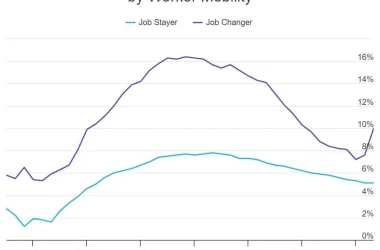By LISA SHREWSBERRY
The State Journal
CHARLESTON, W.Va. — Can a toy be therapeutic? Depends on how you spin it.
Whirling curiosities dot the timeline of novelties that defy explanation — first, yoyos and twirling tops of ancient origin, then hula-hoops and the like in the ’50s. Now a novelty for Gen Z has emerged: the fidget spinner. An obsession to kids, and an annoyance to teachers, whether the newest fixation will manage the tenacity of its predecessors remains to be seen. For the moment, it is creating lines of eager buyers clogging up mall kiosks and scouring the internet for the latest editions.

(Photo by Lisa Shrewsberry)
Whether they could be beneficial tools to those with the urge to squirm is almost too good to be true, but remains a trending topic of debate among adults.
A horizontal propeller for fingers, fidget spinners are the tactile equivalent of white noise — objects to calm the fevered mind during moments of stress or boredom. Some educators believe they present yet another threat to uninterrupted instruction, believe educators.
“Fidget spinners showed up in my classroom about three weeks ago. They are a distraction because of the noises they make while whirring and when they are dropped on the floor,” said Michele Walkup Rector, a sixth grade English teacher at Park Middle School in Raleigh County. “They are most certainly a fad. The kids just want to compare spinners, talk about how much they cost and whose spinner is the best. They are actually collecting and trading them.”
Rector isn’t buying into anecdotal claims of the spinners’ benefits for ADHD, autism and anxiety.
“I think it’s just a money-making scheme,” she said. “I believe there are better ways to combat the need to fidget.”
Autism expert Janet Lintala, author of award-winning book “The Un-Prescription for Autism,” says although there is an absence of evidence for fidget spinners as a therapeutic tool, scientific evidence does link movement to improved thinking skills. “Children (fidget) to produce dopamine in their brains, a neurotransmitter that has been linked to concentration memory and learning,” she said.
A few of her patients regularly use fidget-spinners and swear by them. She believes there may be sensory benefits for those with autism, ADHD and anxiety issues, although the benefits must be balanced with what might become an issue in the classroom.
“The spinners are not silent items, and schools feel the noise distracts the other students. They are also irresistible to other students, who grab them or take them. Many schools are banning them.”
Lintala said families are becoming frustrated as stores are selling out within an hour of receiving a shipment of spinners, with wait lists stretched out to June.
“I have patients who strongly believe (fidget spinners) really help them pay attention. Some feel it is the only thing that helps,” Lintala said.
Patient families have referred to the spinners as a “godsend.”
Even to students without diagnoses, this is a fad with benefits.
Isabell Roop, 13, says spinners work “when you’re nervous for testing.” Roop is not an average performer in the classroom, but an exceptional and driven one. She and twin brother, Isaac, are the proverbial straight-A students for whom classroom compliance and subject mastery are priority. They appreciate the mindlessness of a spinner to decompress from their constant mindfulness.
“You spin them and it helps you to not get agitated,” Isabell Roop explained.
Isaac Roop added, “They’re addicting to spin. It seems to calm your nerves.” He has capitalized on the fidget spinner’s momentary rise in popularity by constructing them with his own 3D printer and selling them at his dad’s office.
The young entrepreneur is pragmatic with his projections, planning to strike while the iron is hot.
“They’ll only be popular for a couple of months — it won’t last long,” he said. “Just like what happened to hoverboards. They were everywhere and now no one even remembers them.”
See more from The State Journal




